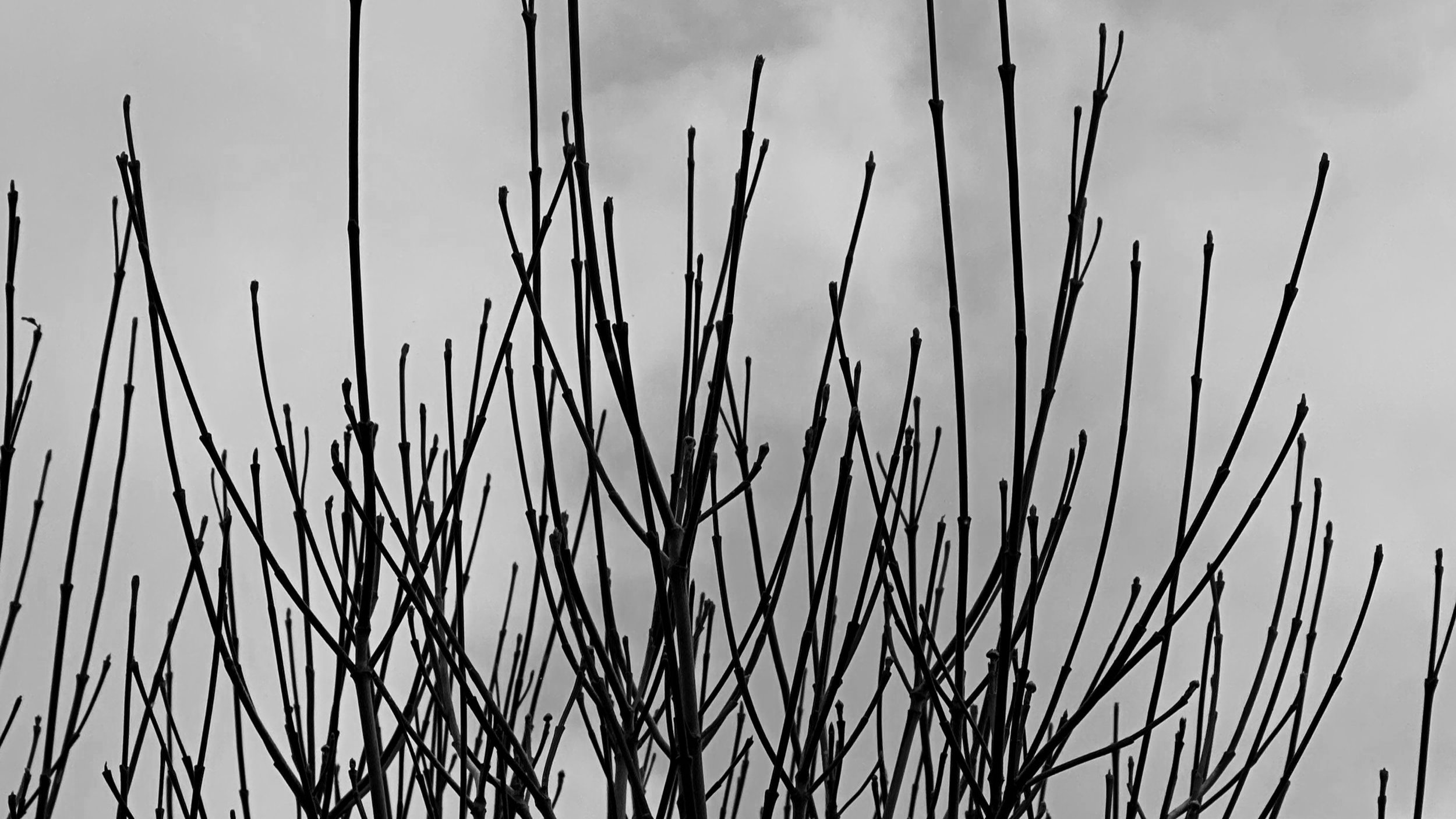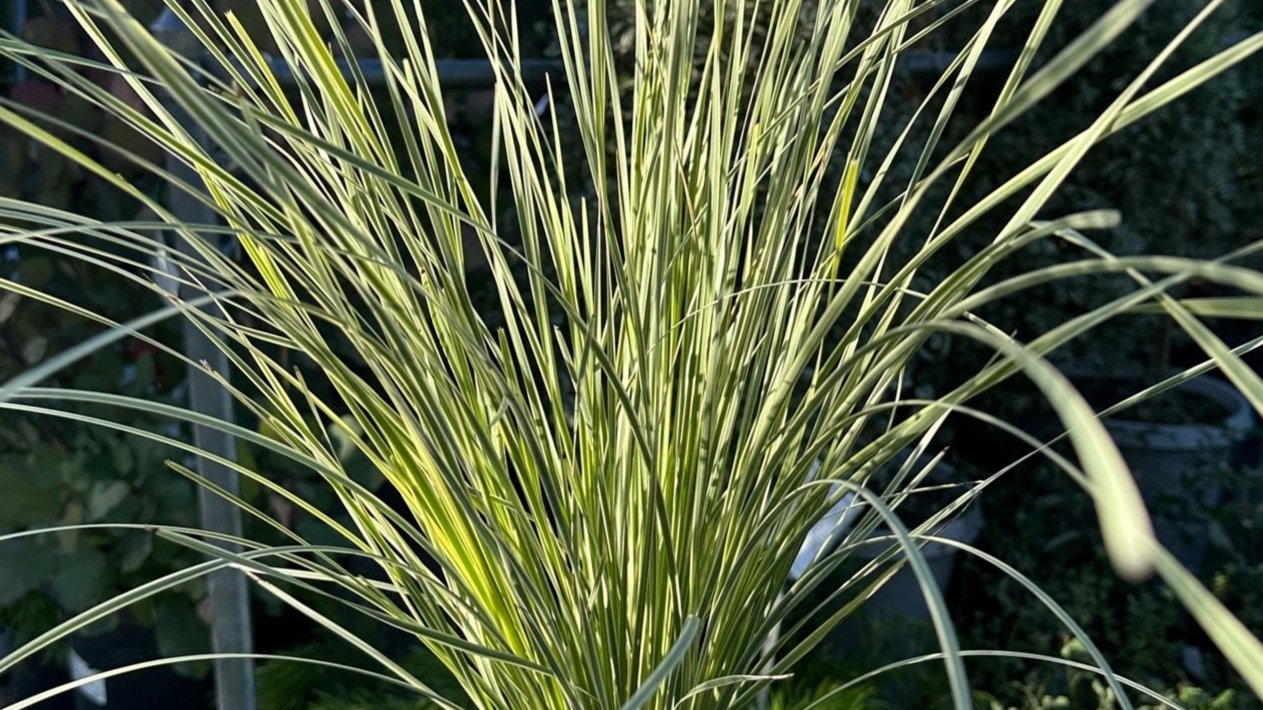Features
Articles, some seasonal, some not… All are about things that catch our eye here at the nursery or when we are out and about.
Our Bare Root trees are 2-3+ years old when they are carefully dug from the ground when dormant, placed in cold storage without any soil around their roots, graded and bundled, then shipped. We receive our bare root fruit trees in early to mid-January. We immediately pot them your convenience and to reduce stress on the trees. Like our bare root roses, you receive the benefit of sale pricing on our bare root fruit trees. Our fruit tree sale will continue through February.
Houseplants not only bring natural beauty indoors but also have the power to purify the air, reduce stress, and create a calming atmosphere in your home. However, for some pet owners, it's important to be cautious when selecting plants for your indoor garden, as some can cause dogs and cats to become ill when ingested. If you have a pet who chews…
Mealybugs, pesky invaders of our indoor and outdoor green spaces, are among the most common and persistent pests that gardeners and plant enthusiasts encounter. Despite their diminutive size, these tiny insects can wreak havoc on our beloved plants if left unchecked. They can impede plant growth…
Thyme (Thymus) is a versatile and aromatic herb cherished as a lush groundcover and delicious culinary herb. It creates a carpet of foliage year-round and is covered with masses of flowers ranging in shades of white, pink, and purple. Attractive to pollinators, thyme is an great addition in bee and butterfly gardens and…
Plants in the Protea family with their stunning flowers and striking foliage, have found a home in the diverse Bay Area landscape. The Protea family (“Proteaceae”) include Leucadendron, Grevillea, Leucospermum, Banksia, Protea, among others. The unique blooms, known for their vibrant colors and intricate shapes…
Creating a thriving vegetable garden in the Bay Area requires more than just selecting the right plants and watering them regularly. Soil is the key to the success of any garden as it directly impacts the growth, yield, and overall vitality of the plants. Most edible plants grow best…
Helleborus are tough, long-lived evergreen perennials which bloom from late winter to early spring. The clusters of nodding, cup shaped flowers bloom in shades of white, pink, red, green, black, dusky mauve, brilliant bicolors, and patterned petals adding a splash of color to a winter garden. Read More…
Why dormant spray? Dormant Spraying is used for two reasons: one is to help control insects, the other is to control fungal diseases. You will have better crops and possibly eliminate the need to spray by reducing insects and diseases in the coming year.
During spells of cold weather, it is advised to protect your plants from potential foliage and root system damage. Cold can affect plants in two ways. Sudden drops in temperature to below freezing can cause ice crystals to form in the plants cells causing them to burst, resulting in die-back or death.
Looking to bring spring-like blooms to your garden in the depths of winter? Any of the numerous varieties of Camellia sasanqua will do just this! The large, bright flowers bloom in bright colors of white, pink and red in early to mid-winter.
Picea pungens is a bright silvery blue, evergreen conifer, with a narrow, pyramidal form with horizontal to weeping branching. In the Bay Area they typically reach 20-25' in height, although they can grow 30-60’ tall and more where they grow naturally.
Brighten your winter garden with Ornamental Kales and Cabbages. Their showy rosettes of foliage in shades of purple, blue, cream, green and rose resemble large flower blossoms. They are cool season biennials, typically grown as cool season annuals in Fall through early Spring.
Both Dipladenia and Mandevilla are beloved for their brilliant, showy trumpet shaped flowers in shades of red, coral, pink, yellow and white. These evergreen, tender, tropical plants flower profusely in summer to late fall/early winter in the Bay Area and attract hummingbirds and bees. They look alike – so what are the differences between them?
Showy, golden feathery, flattened bracts, hiding small whitish flowers at the base, bloom from fall through late winter. Evergreen dense shrub with upright woody branching grows 5-6 ft with an equal spread. A mass of upright growing, feather duster-like stems bear slender horizontal leaves…
Add movement, sound and dimension to your garden with Lomandra, an elegant, evergreen, arching, ornamental grass-like plant. It is beautiful as an accent, in a swath, border or container.
The spectacular, long lasting, 3” conical spikes of silvery feathery bottlebrush-shaped flowers tipped with neon pink bloom late spring through fall. Sometimes known as Mulla Mulla. It is heat and drought tolerant and ideal for rock, Mediterranean, desert gardens, drifts as well as outstanding in mixed containers and it attracts bees and butterflies. What more could you ask for?
Spectacular, elongated conical flower clusters begin blooming in July in lime, red, or pink and can last well into Fall. Depending upon the variety, the blooms can change color over the season – some from white to green to a dusty pink as they mature. They are prized in both cut flower as well in dried arrangements.
Typically Hydrangea p. grows…
Selecting an appropriate pot for an outdoor plant can be perplexing. We find many people underestimate the size of container they need and are inclined to select a pot that looks good with the plant at its current size. Here are some pointers on what to consider when selecting your pottery.
Mycorrhizae are a collection of many species of beneficial soil fungi that help nourish a host plant. The fungi produce very fine threads (hyphae) that attach to the plant’s roots and serve as an extension of the plant’s root system. This enlarged root system permits the plant to penetrate deeper into the soil to obtain additional moisture and nutrients. Healthy soils are rich in mycorrhizal species and essential for a water efficient landscape. Read More…
Adding Cuphea to your garden helps create a hummingbird haven and provides a non-stop color show from spring until frost. Producing an abundance of tubular blossoms in orange, neon pink, purple, red, white, yellow and bi-color combinations, Cuphea brightens the garden while attracting hummingbirds and other pollinators.
Who doesn’t dream of a beautiful garden filled with flowers and butterflies fluttering around? A butterfly garden is a sanctuary for butterflies to feed and thrive. However, it is easy to forget that butterflies come with the dreaded caterpillars…
Cercis canadensis, commonly called Eastern Redbud, are noted for their stunning, tiny rose-purple, red, magenta, pink or white pea-like flowers which bloom profusely in clusters of 4 – 8 on bare dark branches in early spring (March-April) before the foliage emerges. Heart shaped, glossy leaves in bright green, purple, or multi-colored, depending upon the variety, stay attractive throughout the summer.
Let’s all do our part to help restore the Monarch Butterflies by planting Milkweed, the only food source for the caterpillars as they grow. There are many species which the caterpillars feed upon. Learn about the different varieties and the considerations in making the proper choice in this feature.
Billowing clusters of smoke-like plumes top these beautiful shrubs of green, purple or chartreuse foliage. The brightly colored new foliage in spring, blooms through summer, fall foliage colors of yellow through orange, and the architectural branching structure visible in winter all combine to bring seasonal interest throughout the year. They make a striking statement as a specimen or accent focus in your garden.
Endless Summer Hydrangeas bring a riot of color to the garden with their vibrant, huge flowers. There truly is no plant that can rival them for late-spring and summer color. Great for part sun to lightly shaded spots in the garden. Learn more about them here.

























